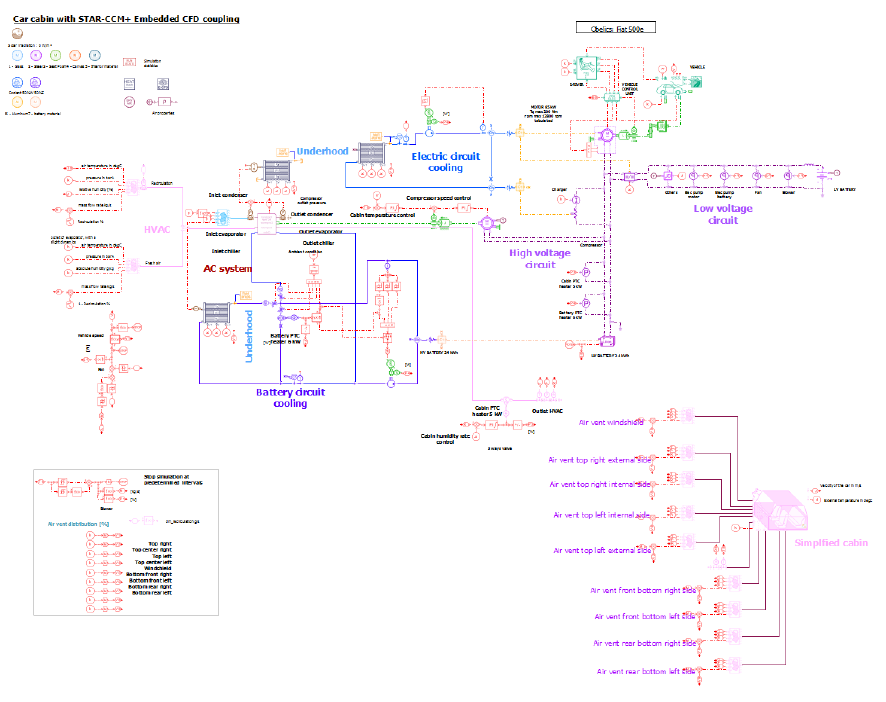OBELICS: European consortium to innovate on electrical vehicle design

As global warming is becoming a reality and transportation emissions affect public health in a visible way, while conventional fossil-fueled vehicles face major difficulties in reducing their environmental impact, electric and electrified transportation appears as a sustainable alternative to preserve the environment and support mobility needs. The switch of a major part of the mobility from conventional transportation to electric is already a major challenge for the automotive industry.
 In that context, European research projects are initiated to bring together research organisms and industrial players together to develop innovative engineering approaches to support those challenges. OBELICS (Optimization of scalaBle rEaltime modeLs and functIonal testing for e-drive ConceptS) is one of them, and gather Siemens PLM software with OEMs, suppliers, and academics actors in order to “develop a systematic and comprehensive framework for the design, development and testing of advanced e-powertrains and EVs line-ups, to reduce development efforts by 40% while improving efficiency of the e-drivetrain by 20% and increase safety by a factor of 10 using OBELICS advanced heterogeneous model-based testing methods and tools; as well as scalable and easy to parameterize real-time models.”
In that context, European research projects are initiated to bring together research organisms and industrial players together to develop innovative engineering approaches to support those challenges. OBELICS (Optimization of scalaBle rEaltime modeLs and functIonal testing for e-drive ConceptS) is one of them, and gather Siemens PLM software with OEMs, suppliers, and academics actors in order to “develop a systematic and comprehensive framework for the design, development and testing of advanced e-powertrains and EVs line-ups, to reduce development efforts by 40% while improving efficiency of the e-drivetrain by 20% and increase safety by a factor of 10 using OBELICS advanced heterogeneous model-based testing methods and tools; as well as scalable and easy to parameterize real-time models.”
During the edition of the 32nd International Electric Vehicle Symposium (Lyon, France) and the Society of Automotive Engineers of Japan annual congress (Yokohama, Japan) both held in May 2019, OBELICS representatives unveiled one important achievement of their research work : a methodology applied to couple system and CFD models on HPC in context of electric vehicle FIAT 500 thermal management design. Paper is available here.
For that work, Nicola Tobia from the Fiat Research Center and Matthieu Ponchant from Siemens Industry Software, explains how resorting to virtual engineering – using Siemens PLM Software simulation solutions – makes it possible to understand the complete behavior of an electric vehicle early at the development cycle, over various drive cycle scenario, in order to focus and improve the thermal management design.
 Simcenter Amesim Electric Vehicle modellingIn that study, Mr Tobia and Mr Ponchant use Simcenter Amesim to simulate systems and components of the electric vehicle, replicating how they work, and to mutually link them in order to simulate the behavior of the whole vehicle in real driving conditions. In parallel, they use Simcenter Star-CCM+ to calculate thermal response with high fidelity in specific conditions on remote HPC. A smart coupling simulation between both software is implemented to improve, from a thermal point of view, both system model in the loop (MiL) simulation and 3D CFD simulation; in fact, CFD receives from 1D MIL more accurate boundary conditions, and in turn gives back results to MiL that uses more accurate data to run, even if not running on same machine.
Simcenter Amesim Electric Vehicle modellingIn that study, Mr Tobia and Mr Ponchant use Simcenter Amesim to simulate systems and components of the electric vehicle, replicating how they work, and to mutually link them in order to simulate the behavior of the whole vehicle in real driving conditions. In parallel, they use Simcenter Star-CCM+ to calculate thermal response with high fidelity in specific conditions on remote HPC. A smart coupling simulation between both software is implemented to improve, from a thermal point of view, both system model in the loop (MiL) simulation and 3D CFD simulation; in fact, CFD receives from 1D MIL more accurate boundary conditions, and in turn gives back results to MiL that uses more accurate data to run, even if not running on same machine.
You’re eager to know more about that project?
Join the OBELICS project representative speakers during one of the two conferences in May 2019 or get directly in touch the technical paper authors:
-
- Nicola Tobia from the CRF nicola.tobia@crf.it
-
- Matthieu Ponchant from Siemens industry software matthieu.ponchant@siemens.com
Subscribe to the project newsletter: https://obelics.eu/subscribe/
Watch our video to learn about Simcenter solutions for vehicle electrification: https://www.youtube.com/watch?v=QReKR2_iA0A&list=PL1m1vu8_quoB5DqKbGwSNbI5aSzappt2x&index=32
Want to know more about our Simcenter solution for electrified vehicle? Register for the workshop Accelerate vehicle electrification with the digital twin approach


